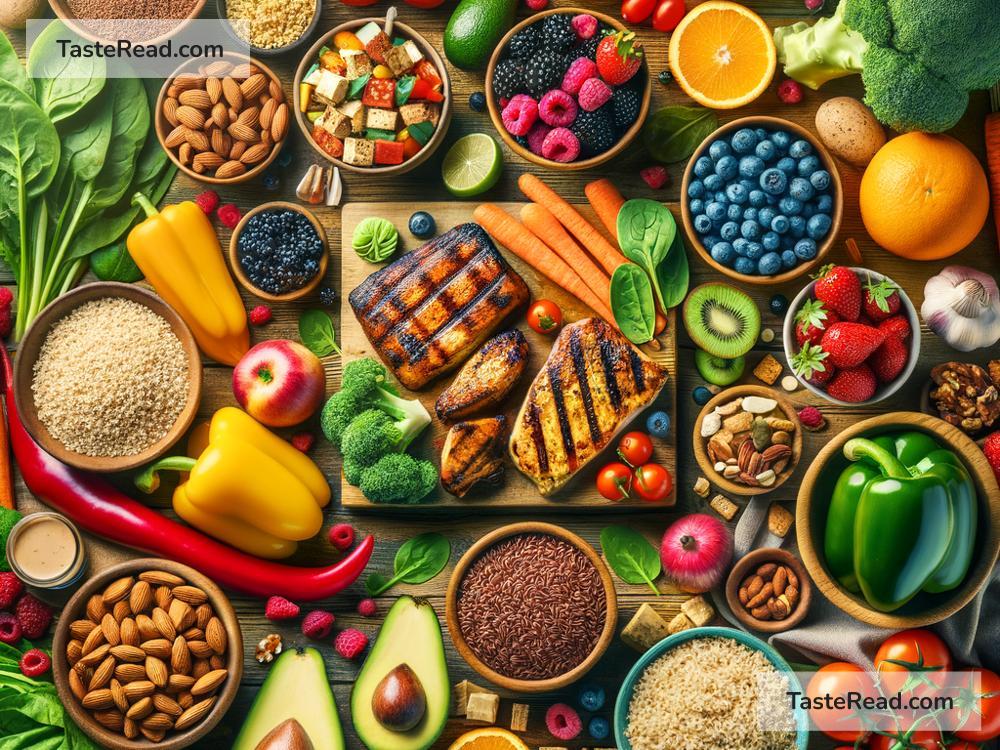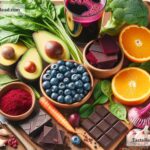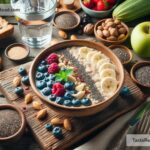Foods for Improving Body Composition: A Simple Guide
Body composition refers to the ratio of fat, muscle, and bone in your body. Improving it means reducing excess fat and increasing lean muscle mass. While exercise plays a big role, what you eat is just as important. Food acts as fuel for your body and provides the building blocks to help you achieve your fitness goals. In this article, we’ll explore simple foods that can help you improve your body composition.
1. Protein: The Muscle Builder
Protein is the superstar nutrient for improving body composition. It helps repair and build muscle tissue after workouts, keeps you full for longer, and can even boost your metabolism. Eating enough protein is essential whether you want to lose fat or gain muscle.
Here are some excellent sources of protein:
– Chicken: A lean and versatile choice, low in fat and packed with protein.
– Eggs: Affordable and loaded with nutrients, including all nine essential amino acids.
– Greek Yogurt: High in protein and gut-friendly probiotics.
– Fish: Salmon, tuna, and cod provide muscle-building protein along with heart-healthy omega-3 fats.
– Plant Proteins: Lentils, chickpeas, and tofu are great for vegetarians and vegans.
Aim to include a source of protein in every meal to support muscle growth and recovery.
2. Healthy Fats: Don’t Fear Them
Many people think fat is the enemy when trying to lose weight or tone up. But that’s not true! Healthy fats are essential for energy, hormone production, and absorbing nutrients. They also help keep you feeling full, so you’re less likely to snack on junk food.
Here are some examples of healthy fats:
– Avocados: Rich in monounsaturated fats and loaded with vitamins.
– Nuts and Seeds: Almonds, walnuts, chia seeds, and flaxseeds are great sources of fats and fiber.
– Olive Oil: A heart-healthy fat perfect for cooking or drizzling on salads.
– Fatty Fish: Salmon, mackerel, and sardines provide omega-3 fatty acids that boost brain and muscle health.
Although healthy fats are great for your body, they’re high in calories, so portion control is still important.
3. Carbohydrates: Energy for Workouts
Carbohydrates are the primary source of energy for your body, especially if you’re active. They fuel your workouts and help your muscles recover afterward. The key is choosing high-quality carbs rather than processed or sugary ones.
Opt for these types of carbs:
– Whole Grains: Brown rice, quinoa, oats, and whole-grain bread provide lasting energy without causing sugar crashes.
– Fruits: Bananas, berries, and apples offer natural sugars, vitamins, and fiber.
– Vegetables: Sweet potatoes, broccoli, and spinach are nutrient-dense and packed with fiber.
By eating the right carbs, you’ll have the energy to power through workouts and build lean muscle mass.
4. Fiber and Vegetables: Stay Full and Healthy
Fiber is a key nutrient for weight management because it fills you up without adding too many calories. It also helps with digestion and stabilizes your blood sugar levels. Vegetables are one of the best sources of fiber, along with other vitamins and minerals.
Here are some fiber-rich options:
– Leafy Greens: Spinach, kale, and collard greens are low in calories and high in fiber.
– Cruciferous Vegetables: Broccoli, cauliflower, and Brussels sprouts are great for reducing bloating.
– Beans and Legumes: Black beans, lentils, and kidney beans are high in both protein and fiber.
Adding vegetables to your plate will help you stay full and nourish your body while working toward better composition.
5. Hydration: Drink Smart
Improving body composition isn’t just about food—it’s also about staying hydrated. Water helps your body function properly, keeps your metabolism active, and aids in recovery after exercise. Sometimes, thirst can be mistaken for hunger, leading to overeating. Keep a water bottle handy throughout the day!
In addition to plain water, you can hydrate with:
– Herbal tea: Chamomile, peppermint, or green tea are great options.
– Infused water: Add slices of lemon, cucumber, or berries for flavor.
Avoid sugary drinks like soda and fruit juices, which can add empty calories to your diet.
6. Foods to Avoid
While it’s important to focus on healthy foods, avoiding certain items can make all the difference:
– Processed Foods: Chips, frozen meals, and cookies are often high in unhealthy fats, sugar, and salt.
– Sugary Drinks: Soda, energy drinks, and sweetened coffee can quickly pile on unwanted calories.
– Fried Foods: French fries and fried chicken are often cooked in unhealthy oils and have little nutritional value.
These types of foods can slow down your progress and make it harder to improve your body composition.
Final Thoughts
Improving body composition doesn’t mean depriving yourself of food—it means making smarter choices. Focus on eating a balance of protein, healthy fats, and good carbs while avoiding overly processed and sugary items. Pair your meals with exercise and proper hydration, and you’ll be on your way to achieving your fitness goals.
Remember, changing your body composition takes time and consistency. Start by including these foods in your daily meals, and enjoy the process of getting healthier and stronger!


